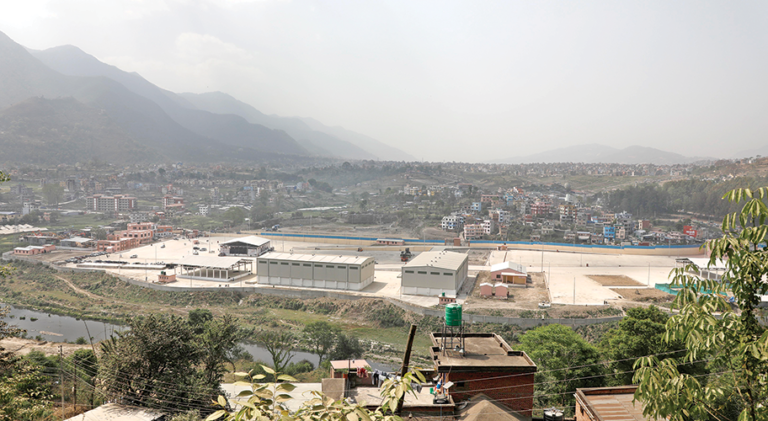
Ten cargo containers have entered the newly built Chobhar Dry Port in Kritipur after its inauguration by Prime Minister Sher Bahdur Deuba on April 5.
The dry port has allowed importers to make customs clearance of their goods in Kathmandu itself, saving their trips to the various border checkpoints from where shipments enter Nepal.
Dhan Bahadur Baruwal, custom chief of Chobhar Dry Port, said that cargo containers were not entering daily because it came into operation only recently.
He further said that the problem of agents had also created problem for many cargos to enter. An agent can keep two representatives; they already have their representatives in other custom offices.
In such a condition, agents have to come here to work because the dry port has just recently come into operation and it doesn’t allow representative to work there.
It is also likely that businessmen are reluctant to shift to the new customs office from old ones, which may be one of the factors preventing them from starting work from new customs office. As a result, cargo containers are not coming here, he said.
Baruwal said that current problems will be solved and more cargo containers would arrive because Kathmandu is the hub of business center for industrialists and businessmen alike.
He added, “We have been providing facility for industrialists and businessmen to declare the arrivals of cargo directly by themselves if they have faced problems. Problem of the agents will be solved after Public Service Commission publishes the results of agents.”
Opening process of Letter of Credit (LC) is negligible, which has also created problems in bringing cargo containers. The number of cargo containers arriving here will go up from coming fiscal year, he said.
The dry port was constructed with a loan of Rs. 1.54 billion from the World Bank. There are three buildings that have customs, quarantine facility, security, three warehouses, stuffing storage, three weighing machines, an electric sub-station and boundary lights.
The dry port is divided into two sections: export-import and domestic. However, infrastructures like parking lots for the containers, stores and distribution centre are yet to be built.
Source : TRN,






